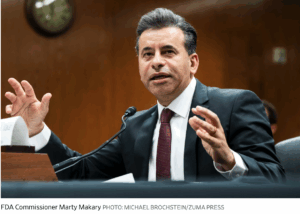
The Trump administration is cracking down on pharmaceutical advertising and it’s about time. You don’t have to spend much time watching television to realize that drug ads dominate TV advertising. It wasn’t always this way.
When I started my medical practice in 1984, the pharmaceutical companies spent most of their advertising budgets hiring sales representatives who spent their time promoting their drugs directly to doctors. I usually saw two or three different drug company sales reps in my office each week. They gave me their pitch to use their drugs and provided me with samples to give out to the patients. I got direct information on the new drugs and the patients got free samples. It was a useful system and the television was free from drug ads.
But somewhere along the way the system changed. Previously prohibited television advertising was allowed and drug companies shifted their focus from direct sales promotions to doctors to direct sales to consumers. I noticed the change quickly when I stopped seeing sales reps in my office and free samples for my patients. Moreover, I started seeing television ads that put rose-colored glasses on the new drugs they were selling.
As a doctor, I can understand most of the sales promotions on television, but woe to anyone who hasn’t been to medical school! The average person can’t possibly understand the nature of the drugs they’re selling nor the risks involved with their treatment. I’ve often told my wife you could use the same ad for every different drug on the market because they all have one thing in common – the people in the ads are happy, active members of society that bear no resemblance to those who are actually being treated for the disease!
I’m convinced the intent of the ads is to inform doctors, not patients, since they have largely disbanded their sales force that used to promoted their drugs direct to doctors.
In response to this situation, President Trump recently signed an executive order calling for stepped-up federal enforcement of rules for pharmaceutical ads. Liz Essley Whyte, Natalie Andrews, and Alyssa Lukpat, reporting for The Wall Street Journal, tell us what happened:
In conjunction with the action, the Food and Drug Administration said it is sending thousands of enforcement letters to drugmakers related to misleading ads. In addition, the Department of Health and Human Services is planning to close what the administration sees as a loophole allowing certain broadcast ads to give abbreviated descriptions of drug side effects. The FDA’s guidance they seek to amend, first proposed in 1997, allowed drugmakers to list only major side effects in TV advertising while posting fuller information in another location, such as online. That guidance fueled a boom in TV drug ads, according to drug ad experts.
The enforcement effort targets drugmaker TV ads as well as paid social-media influencer posts and telehealth advertising, administration officials said.
The FDA shared a sample of a letter it would send, saying it was directing a company to remove noncompliant advertising and bring promotional communications into compliance. “FDA is concerned patients are not seeing a fair balance of the information regarding a drug product,” the agency’s sample letter said. The crackdown is a major step up from recent enforcement levels, administration officials said: The agency in 2023 sent one warning letter and none in 2024.
“We’re going to be tough on this,” FDA Commissioner Marty Makary said in an interview on a Wall Street Journal podcast. “Drug companies spend 20% to 25% of their budgets on marketing and ads. I’d like them to spend that money on lowering drug prices for everyday Americans.”
Major drugmakers take pains to follow FDA rules on advertising, with many submitting TV ads to the agency before they run to get advice, drug ad experts said. But in recent years digital ads for weight loss offerings of telehealth firms and medical spas have proliferated online, many without any discussion of side effects.
Pharmaceutical companies spent more than $10 billion on prescription drug ads last year, with the top 10 drug brands accounting for $3.3 billion, according to an analysis by MediaRadar, which analyzes ad data. That includes advertising on television, streaming networks, websites and other mediums.
Health Secretary Robert F. Kennedy Jr. has long criticized direct-to-consumer drug advertising, saying it inflates U.S. drug spending and makes media beholden to drugmakers. “Pharmaceutical ads hooked this country on prescription drugs,” he said in a statement Tuesday. “We will shut down that pipeline of deception.”

